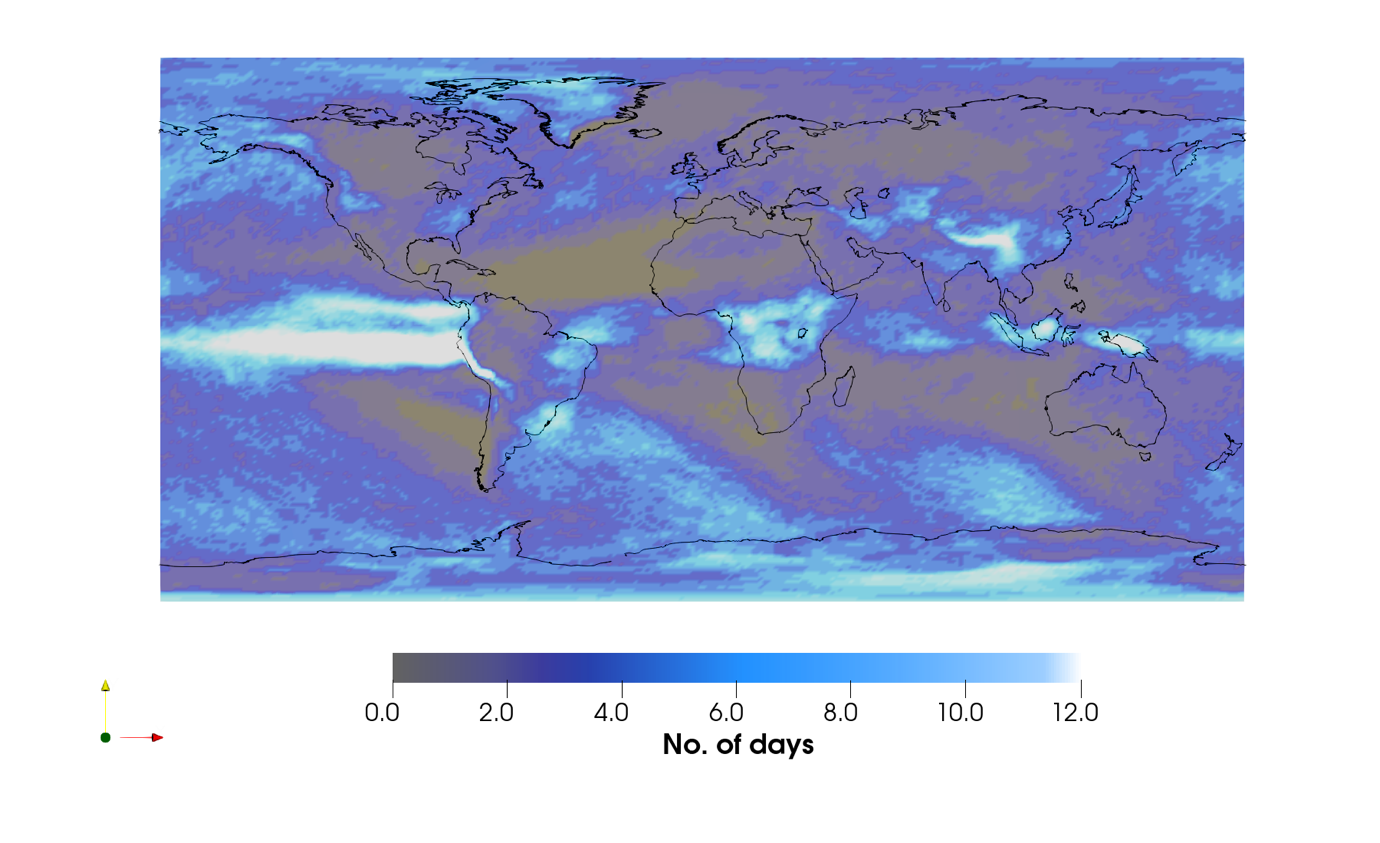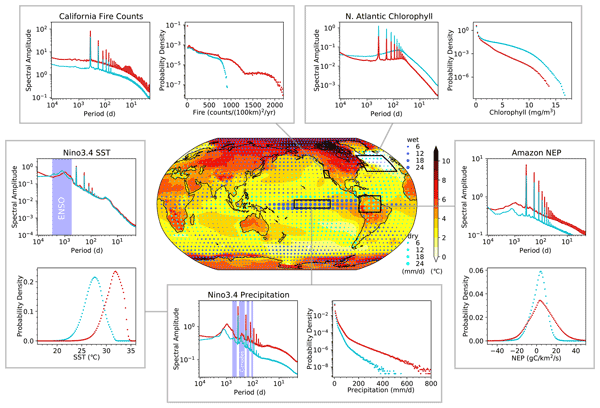新しいコンピューターモデルシミュレーションにより、人為的な強制が継続した場合の気候変動の広範な変化を特定 – New computer model simulations identify widespread changes in climate variability under sustained anthropogenic forcing –
2022-01-10 大韓民国・基礎科学研究院(IBS)

Fig. 1: 21世紀における温室効果ガス温暖化による10年ごとの異常降水日数。示されたパターンを導き出すには、まず、100のシミュレーションについて、2000年から2009年の10年に一度の降水量の最大値のイベントを特定する。ここでは、この閾値は、降水量の上位 100 値のうち最も低い値を選んでいる。第二段階として、2090-2099年にかけて、この閾値を超えた日数をカウントし、スケール(日数単位)の値が1であれば、将来も変化がないことを、6であれば、将来さらに5日の異常降水が発生することを示す。なお、東部赤道太平洋領域での振幅が非常に大きいので、陸上での応答を強調するために、カラースケールは 12 日で飽和している。
<関連情報>
- https://www.ibs.re.kr/cop/bbs/BBSMSTR_000000000738/selectBoardArticle.do?nttId=20795&pageIndex=1&searchCnd=&searchWrd=
- https://esd.copernicus.org/articles/12/1393/2021/
気候変動における人為的変化の偏在性 Ubiquity of human-induced changes in climate variability
Keith B. Rodgers1,2, Sun-Seon Lee1,2, Nan Rosenbloom3, Axel Timmermann1,2, Gokhan Danabasoglu3, Clara Deser3, Jim Edwards3, Ji-Eun Kim1,2, Isla R. Simpson3, Karl Stein1,2, Malte F. Stuecker4, Ryohei Yamaguchi1,2, Tamás Bódai1,2, Eui-Seok Chung5, Lei Huang1,2, Who M. Kim3, Jean-François Lamarque3, Danica L. Lombardozzi3, William R. Wieder3,6, and Stephen G. Yeager3
Received: 25 Jun 2021 – Discussion started: 06 Jul 2021 – Revised: 05 Oct 2021 – Accepted: 09 Oct 2021 – Published: 09 Dec 2021
Abstract
![]()




